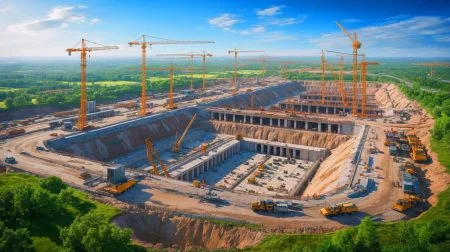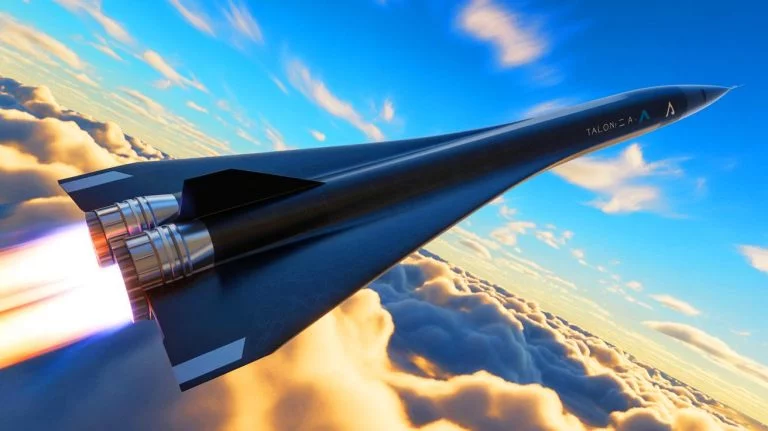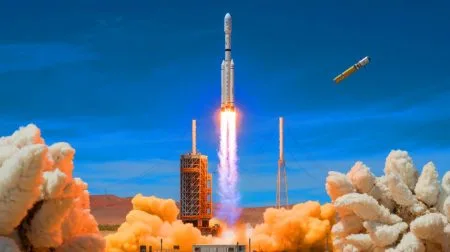| IN A NUTSHELL |
|
The aerospace industry is witnessing a pivotal moment as Ursa Major, a U.S.-based company, secures a $32.9 million contract to supply advanced H13 rocket engines for Stratolaunch’s Talon-A hypersonic test vehicle. This development is a significant stride in the U.S.’s efforts to advance hypersonic testing and maintain its edge in global technology. The Talon-A, with its new engines, promises to enhance reusability and efficiency, marking a substantial step forward in aerospace technology. As nations like China and Russia continue to advance in this arena, the collaboration between Ursa Major and Stratolaunch is more than just a business deal; it’s a crucial component of national defense and technological superiority.
Talon-A to Get New Engines
The Talon-A hypersonic test vehicle represents the cutting edge of aerospace innovation. Equipped with H13 engines from Ursa Major, the Talon-A is a reusable vehicle capable of reaching speeds over Mach 5. This makes it an essential platform for testing military hypersonic technologies, a high priority for the Pentagon. The vehicle is launched from Stratolaunch’s massive carrier aircraft, which boasts an impressive wingspan.
In a recent achievement, the Talon-A completed its second successful Mach 5+ flight test in May. This milestone is crucial for hypersonic research and development. “With the data collected from this second flight, we are able to apply lessons learned to enhance the strength and performance of the Talon-A vehicles,” said Dr. Zachary Krevor, President and CEO of Stratolaunch. The new contract with Ursa Major aims to leverage these findings, enhancing propulsion systems for improved performance. This aligns with the U.S.’s strategic focus on hypersonic testing, particularly as international competitors like China and Russia continue their advancements.
More Thrust, More Speed
Hypersonic testing is fraught with technical challenges and high costs, making reusable platforms like the Talon-A invaluable. The upgraded H13 engines are designed to deliver more thrust—up to 5,000 lbf—and longer lifespans through oxygen-rich staged combustion. This efficient engine cycle, typically reserved for large space launchers, underscores the sophistication of Stratolaunch’s technology. These engines aim to reduce costs and increase test frequency, facilitating rapid advancements in hypersonic capabilities.
The collaboration between Ursa Major and Stratolaunch strategically enhances the U.S.’s hypersonic testing infrastructure. By providing advanced, cost-effective engines, the partnership seeks to accelerate the development of hypersonic weapons and defenses. This is imperative in a global context where speed and technological superiority are crucial.
Strategic Importance of Hypersonic Testing
This contract with Ursa Major is significant beyond its technological advancements. Hypersonic testing is crucial for national defense as it ensures technological superiority. As countries like China and Russia advance rapidly in hypersonic technology, it is vital for the U.S. to maintain its lead. The Talon-A, with its enhanced propulsion system, positions the U.S. as a leader in hypersonic research and development.
Dan Jablonsky, CEO of Ursa Major, emphasized the contract’s importance, stating, “This contract directly supports U.S. hypersonic test infrastructure and the broader imperative to accelerate high-speed flight programs that deliver for national security.” The collaboration focuses on providing real capabilities in the field, emphasizing speed and efficiency without sacrificing performance. This underscores the strategic importance of hypersonic testing in global defense dynamics.
The Future of Hypersonic Technology
The aerospace industry is poised for transformation as hypersonic technology continues to evolve. The Talon-A, equipped with advanced H13 engines, epitomizes the future of aerospace innovation. The partnership between Ursa Major and Stratolaunch illustrates the potential of public-private collaborations in enhancing national defense capabilities.
The emphasis on reusability and cost-effectiveness is vital as the U.S. seeks to maintain its competitive edge in the global hypersonic race. As these technologies advance, the potential for hypersonic vehicles in both military and civilian applications grows. The developments in the Talon-A project are just the beginning, paving the way for future innovations in aerospace technology.
The strides made in hypersonic technology with the Talon-A and the H13 engines represent a significant milestone in aerospace innovation. As the U.S. continues to prioritize hypersonic testing, the collaboration between Ursa Major and Stratolaunch sets the stage for future advancements. How will these developments influence the future of global defense and aerospace technology?
Did you like it? 4.4/5 (25)








Wow, hypersonic tech is really taking off! 🚀 What’s next, warp speed? 😉
China’s fury over this seems a bit much. Isn’t competition in tech supposed to be good?
Terrorist state getting its new weapons to destabilize and kill more peopel throughout the world and steal other countries resources
How long before these hypersonic vehicles are operational in the military?
What are the environmental impacts of these hypersonic tests?
Are these engines being developed for civilian use too, or just military?
Did anyone else notice the spelling mistake in the third paragraph? 😅
Can the Talon-A launch from any carrier aircraft, or is it specific to Stratolaunch’s?
Thank you for the detailed breakdown of the Talon-A’s capabilities. Very insightful!
Would love to see this tech applied in space exploration. 🚀
How does this development affect global security dynamics?
So, is this the start of a new arms race?
Are there any risks involved with these hypersonic speeds?
What makes the H13 engines so special compared to previous engines?
The pace of aerospace advancement is amazing. Can’t wait to see what’s next! ✈️
How do these hypersonic vehicles handle the immense heat generated at such high speeds?
Is Mach 5+ the fastest speed achieved so far, or have there been faster tests?
Why is hypersonic speed so crucial for military technology?
This contract seems like a significant win for Ursa Major. Congrats to them!
Hope the US stays ahead in this tech race. It’s crucial for national security.
Is this technology only for the US, or are there plans to share with allies?
What kind of data is collected during these hypersonic test flights?
Does this mean future commercial flights could be much faster? 🛫
How does the Mach 5+ speed compare to existing military aircraft speeds?
How does hypersonic speed affect the aerodynamics of the vehicle?
The Talon-A sounds incredible. How long until we see these in action?
What are the main challenges faced in hypersonic testing?
Interesting read! The collaboration between Ursa Major and Stratolaunch seems pivotal.
How does the U.S. plan to maintain its lead in this tech race?
Does anyone else think this sounds a bit like a new Cold War scenario? 🤔
Is there a civilian application for hypersonic tech, or is it purely military?
Could this tech be used for space travel in the future?
Hoping these advancements lead to more peaceful applications rather than conflict.
Why is the reusable aspect of the Talon-A so important for hypersonic testing?
Seems like a huge investment. Is it really worth the $32.9 million?
How do these advancements in the U.S. compare to China’s current hypersonic capabilities?
The Talon-A sounds like something out of a sci-fi movie! 🌌
Can someone explain what ‘oxygen-rich staged combustion’ means? 🤔
I don’t get why China is so upset. Isn’t this just progress?
Great article! Hypersonic tech is fascinating. Thanks for sharing!
Not to worry. China has atleast one spy in place, I’m sure, and already has received most of the plans. The US is extremely friendly that way.